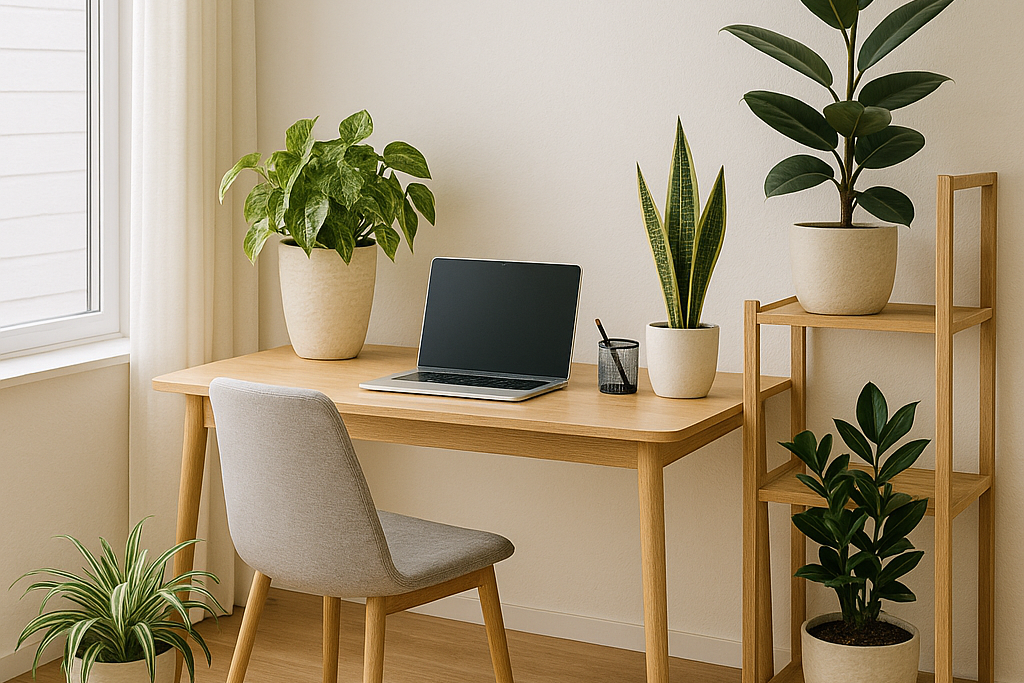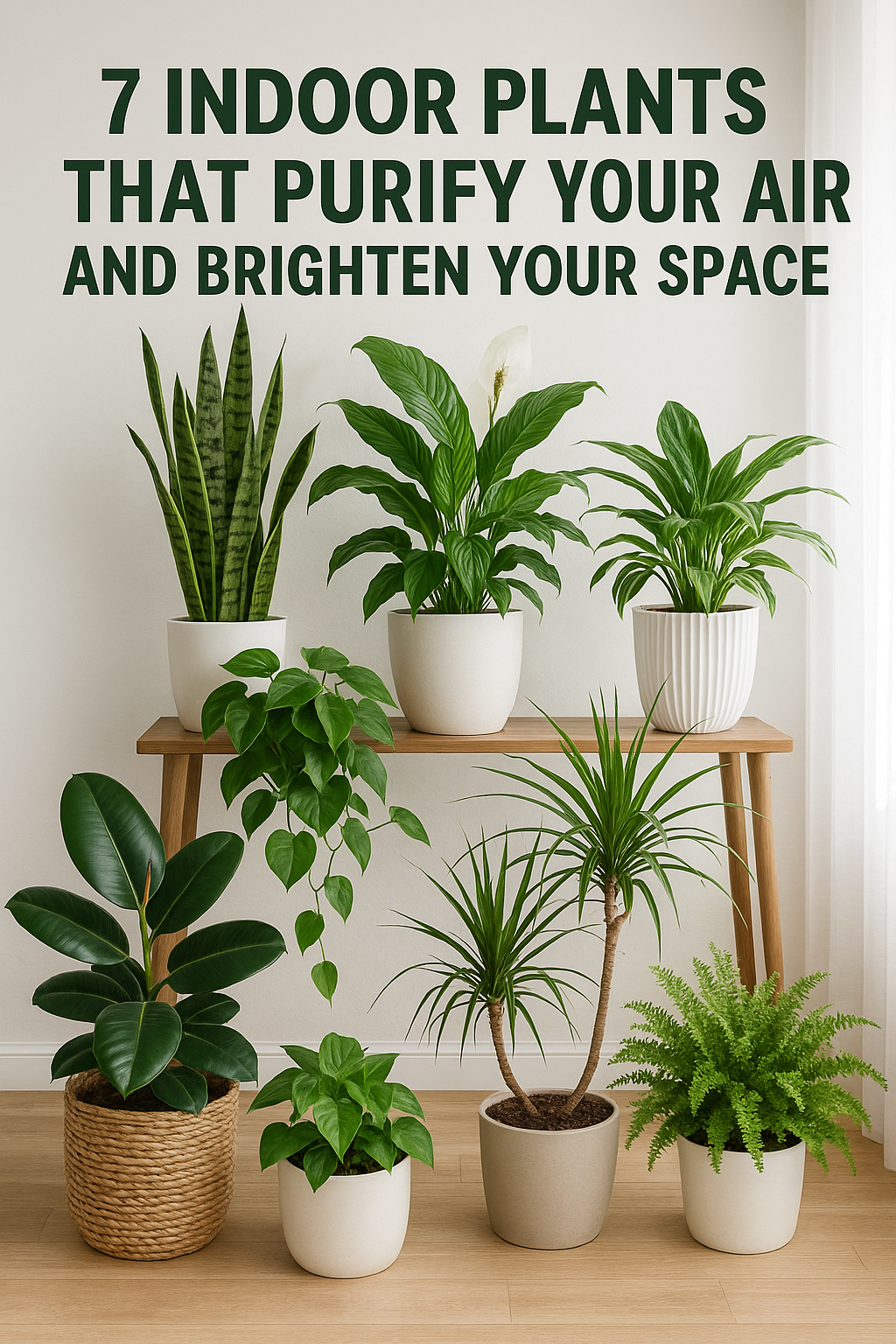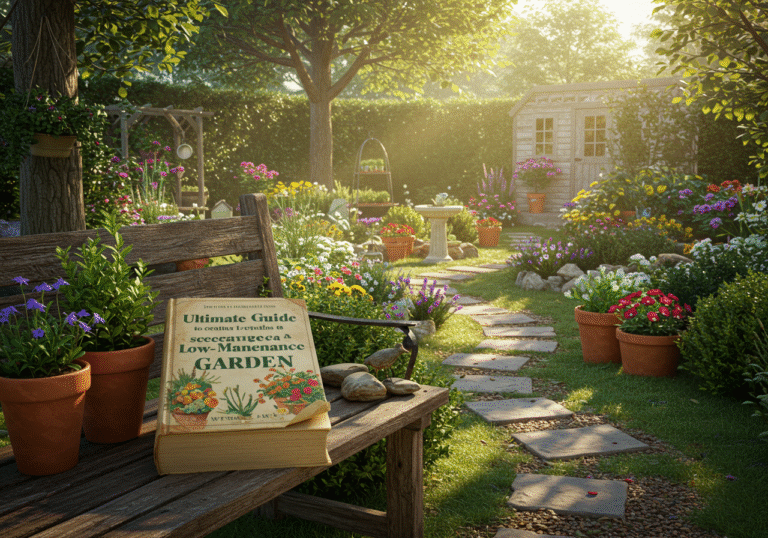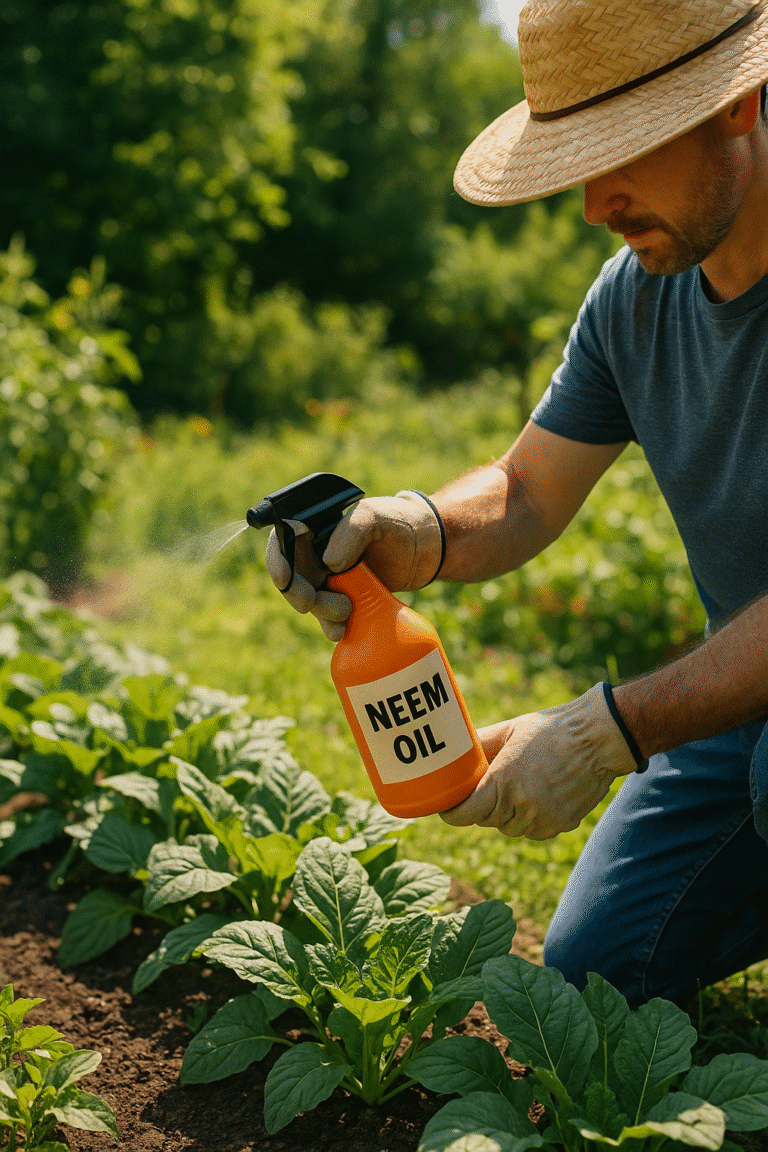7 Indoor Plants That Purify Your Air and Brighten Your Space
If you are looking to elevate your home decor and style it like you hired a professional to do the job, get indoor plants. If you want to purify the air in your home in the most natural and aesthetic way, get an indoor plant.
Houseplants do much to brighten your space. They are natural air purifiers that help rid your home of pollutants that build up over time. And they are beautiful to behold, always adding that stylish, exotic touch to your home decor.
Depending on the plants you choose, many are low maintenance, some more beautiful than others, and some with far more than air-purifying benefits.
All houseplants are not created equal, so we are sharing the top seven indoor plants for purifying air and livening up your space. This list also includes what maintenance will be required to help you make your choice.
Rubber Plant

While the name might make it seem artificial, the Rubber plant is one of the most popular indoor plants for purifying air. Its leaves have a rubber-like sheen to them, hence the name.
This plant gives you a lot of choice for color, from deep green to variegated leaves with creams, pinks, and whites. It is easy to grow and known for its ability to remove the chemical toxin formaldehyde.
The rubber plant’s large leaves act as a natural air filter, absorbing pollutants and converting them into harmless compounds. It also removes mold spores and bacteria from the air.
You can easily care for rubber plants indoors with regular watering and indirect light. They grow tall and vibrant.
Peace Lily
Peace Lily is a gorgeous indoor plant recognizable by its white, one-leafed flowers. It is one of the top air-purifying houseplants for removing harsh chemicals and purifying the air. Peace Lily purifies indoor air by removing alcohols, acetone, trichloroethylene, benzene, and formaldehyde.
It also gives psychological health benefits with its calming and elegant white blooms. Peace Lily absorbs mold spores and reduces allergens. They can tolerate low light conditions but do best in bright, filtered, indirect light.
Avoid direct sunlight, which can burn Peace Lily leaves. Other maintenance tips include keeping them in warm temperatures and watering when the top inch or two of soil feels dry.
Chrysanthemum
With its brightly colored leaves and stunning appearance, you wouldn’t expect Chrysanthemum to have air-purifying benefits. Also known as ‘mums’, this plant exists in a variety of colours ranging from yellow, pink, red, and white flowers.
When kept indoors, it sucks pollutants like formaldehyde and benzene from the air. They are also useful in removing chemicals associated with paints and glues. And as you might expect, ‘mums’ are known for their symbolic meanings of happiness, optimism, and longevity. They add a vibrant touch of beauty to your home.
Their flowering season occurs in late summer and fall. Mums are easily maintained. They do well in bright, indirect light. Avoid direct sunlight, which can burn the leaves. Water often, but don’t overdo it. Maintain cooler temperatures around mums.
Spider Plant
You can tell a lot from its simple appearance. You can tell that the Spider Plant will require the lowest of maintenance. It is simple to propagate, versatile in its beauty, and can grow anywhere. If you have a busy lifestyle and struggle to keep your indoor plants alive, the Spider Plant is the best for you.
They are known for their ability to purify air, remove toxins like formaldehyde, xylene, and toluene. That’s not all—they increase oxygen levels and add humidity to the air, making them a natural humidifier. The Spider Plant does this by removing carbon dioxide. For maintenance, keep it in low to medium light and let it dry out a little between waterings.
As a popular choice for home decor, you can try them as hanging plants.
Aloe Vera
Well known for its many benefits in health and beauty, it will interest you to know that Aloe Vera also has air-purifying benefits. It helps purify the air by absorbing carbon dioxide and releasing oxygen at night. It eliminates common chemicals found in household detergents, paint, and glue from the air.
As a houseplant, Aloe Vera is not only aesthetic and handy for burns and skin routines, but it also ultimately improves air quality. Aloe Vera requires bright, indirect sunlight and very limited watering.
English Ivy
English Ivy is popular in landscaping and indoor decor for its beautiful leaves and the unique way it grows. It has air-purifying abilities, removing harmful toxins such as formaldehyde and benzene from the air. It particularly improves respiratory health, reduces stress, and increases humidity.
English Ivy helps reduce airborne mold spores and allergens. It’s a low-maintenance plant that does well under the following conditions: bright, indirect light, water only when dry, and kept at room temperature.
The only downside to this indoor plant is that it is more prone to common pests such as spider mites than other plants.
Gerbera Daisy
Gerbera is a houseplant well-loved by plant owners. It helps to purify air and brighten your space with its beauty. Beyond its irresistible aesthetic appeal, Gerbera Daisies remove toxins and carbon dioxide from the air. There are studies that have also suggested that it can uplift your mood and mental health.
Gerbera Daisies can increase humidity levels in the air, which can be beneficial for reducing cold-related illnesses and providing comfort. Its maintenance requires proper and intentional care.
Gerbera needs bright, indirect light, a relatively high humidity level, and a well-draining potting mix. Water them only when the soil seems dry.
Unlike many indoor plants with air-purifying benefits, Gerbera Daisies are non-toxic when ingested. This is important if you own a pet.
Choosing your air-purifying houseplants comes down to how well you can care for plants, how many you want in your home, and whether you have pets or children.








